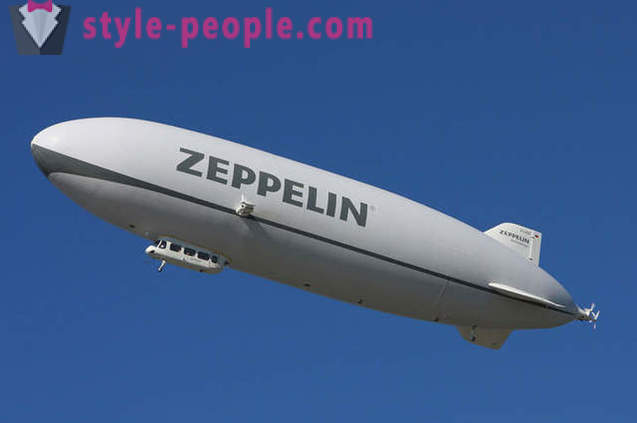The history of airships
July 2, 1900 Count Zeppelin, whose name was to become a household name, has made its first flight on the airship rigid structure.
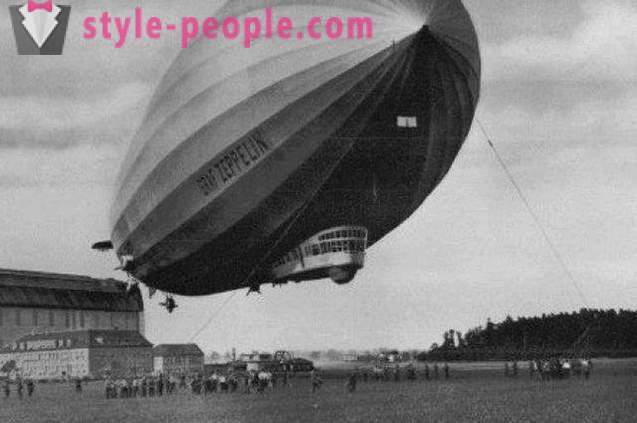
The airship LZ 127 "Graf Zeppelin". © / Public Domain
Airship - that is the literal translation of the German word Luftschiffbau, which the German Count Ferdinand von Zeppelin named his first airship rigid structure, opened this era of ballooning. In the English language, by the way, the dirigible airship designated word, which literally means in Russian all the same "airship. Subsequently, the designer of a household name, and in the Russian language "Zeppelin," is now almost complete synonymous with the French word "airship", as the "Jacuzzi", for example, is a hot tub, no longer associating with the name of a person.
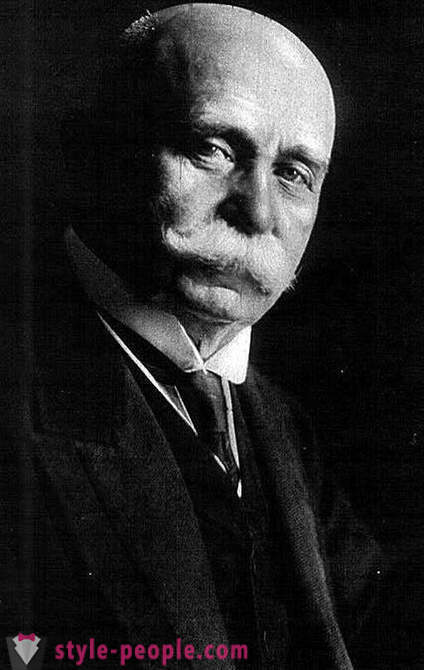
Ferdinand von Zeppelin. Photo: Public Domain
Graf Zeppelin, however, in the airship was by no means a pioneer - three years before it another German pioneer of aeronautics has been running an airship with a rigid structure. A couple of decades earlier airship began to develop and the French. However, the design of their ships is fundamentally different from that offered Zeppelin.
Fanatic aeronautics
For the first time the idea of the possibility to travel through the air with a huge sphere with a rigid frame, different compartments which are filled with gas, a retired general of the German army Zeppelin expressed back in 1874, making an appropriate entry in the diary. Then, however, it is primarily attracted by the opportunity to use airships for military purposes.
Military need to stop and he did later, sending endless emails first persons of the state. Those consulting the other military, each time answered enthusiast failure. The other would probably have simply lowered his hands and surrendered. But Zeppelin was not like that. He began work on his first "air ship" with his own money. He did not lower his hands, and after the first test, which showed that the inventor calculations underestimated the resistance of the air and noise, which is usually a breeze can make the movement of the airship. Zeppelin and then did not give up - he began to besiege the leading design offices with orders for more and more powerful engines, which could offset the effects of the air.
Gradually, seeing his first successes, the government began to take an interest in the workings of the graph. He was given even meager grants, which, however, still did not go to any comparison with the amounts allocated for the construction of airships by the inventor himself.
As a result, Zeppelin proved his innocence July 2, 1900, have demonstrated the first successful flight of the airship LZ-1 (airship Zeppelin - 1).
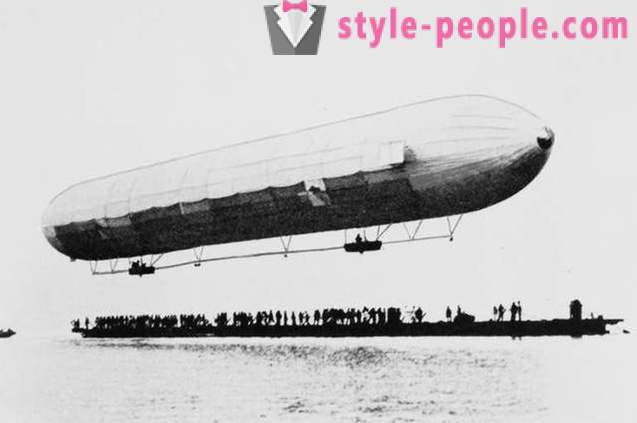
The airship Zeppelin - 1. Photo: Public Domain
in the Air
Origin airship Zeppelin conducted in air of about 20 minutes and using two motors manufactured by "Daimler" manages to develop a speed slightly greater than 21 kilometers per hour. He flew over the lake, carrying enough crash-land, which led to a slight injury.
"Injuries" Zeppelin was quickly repaired, so that in a short time are a couple of test flights. However, positive impression on the airship military has not made, and they refused to continue to sponsor the Count project.
But the dream is a dream. Zeppelin decides to improve its first model. For this, he lays his estate, jewelry of his wife and some more expensive things. Provide all possible assistance to friends developer and founder of the company Daimler, which sees in the industry perspective. Also on the side of the graph and it remains the Kaiser of Germany. Money directly it does not, but allows you to earn about 120 thousand marks, by approving the state lottery, conducted by Zeppelin. Models of Zeppelin started to improve and grow, not only technically, but also in the literal sense. The length of the "belly" of the third airship greater than 130 meters, and its speed has reached 50 kilometers per hour. All this has forced the military to pay attention to the development of the graph and look at them from a slightly different angle.
As a result, the airships were still considered promising project. The Ministry of Defense has allocated money for further development, but has set designer and hard task. So, his new ship was to be able to stay on the move for 24 days. The range filter thus should not be less than 700 kilometers, and the speed of the vessel should be 65 kilometers per hour. As a result, airships have copied all records aeronautics. The longest flight took place over 118 hours with little. Farthest flown more than 11,000 kilometers from Frankfurt to Rio de Janeiro. A maximum speed, which managed to develop an airship was 140 kilometers per hour.
Airship in Germany, published a leading role in the industry began to develop rapidly. Development Zeppelin found their way not only for military purposes. Airships used for the transportation of goods, transportation of people, promotions. Dimensions airships all increased, and their importance is growing.

Photo: Public Domain
you can judge the impact of the boom airship only by the fact that the tallest building in the world at that time, "Empire State Building", was designed in such a way that its huge spire could act as a mooring mast for zeppelins giant. The architects planned that the landing of people could be carried out at 102 floors. However, after the first tests it became clear that strong winds will not allow passengers to safely get on a skyscraper, and the idea was quickly recognized as utopian. But it was, and it already says a lot. That airship belongs to the first trip around the world by air. And in this journey Zeppelin (and in the way it has gone German airship graph structure) made only three landing to refuel. Airships were the first flew over the North Pole and many other hard to reach natural objects that have air no one could see or to photograph.
Airships were widely used during World War I, and sometimes even participated in the battles. In some armies military airships survived until the Second World War, but in hostilities is almost not used because of the high degree of vulnerability, coupled with the difficulties of navigation and giant sizes.
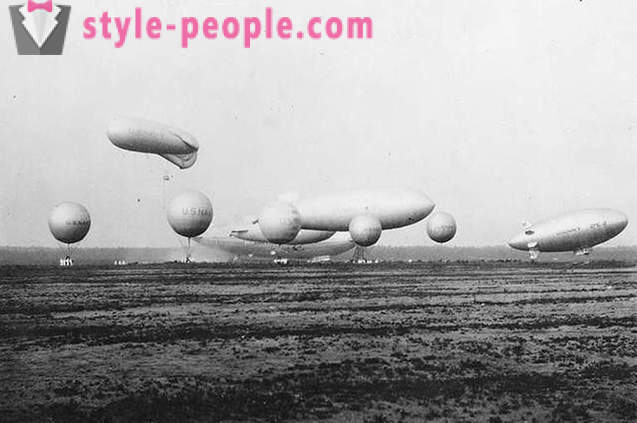
Photo: Public Domain
September 10, 1930 one of the most famous and probably the most successful airship (judging by the number of kilometers traveled and committed flights), "Graf Zeppelin", named in honor of his 90-year-old founder, visited Moscow, which was a significant event for the Soviet capital Cities.
Air "Titanic"
If the airship continued to grow at a pace as in the last century, it is quite possible that we would now widely used zeppelins. These huge volatiles structure has indisputable advantages (generally in terms of comfort) even when compared to modern aircraft. Losing, of course, the speed of movement.
But the May 6, 1937 was an irreparable - the largest airship crashed in the history of mankind, "Hindenburg". Crown of creation Zeppelin, which was called "Air Titanic" took off from Germany on 3 May and after 3 days, breaking the Atlantic Ocean, had to make a successful landing in New York.
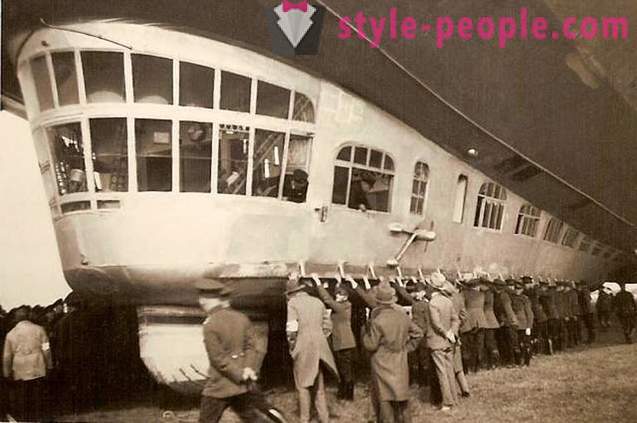
Photo: Commons.wikimedia.org/ CarolSpears
Everything went like clockwork, 245-meter-long giant (for comparison, "Titanic" length was not much larger - 269 meters) in time arrived in the economic capital of the United States. The pilot even gave an elegant presentation of the residents of "Big Apple", spent his ship at a minimum distance from the highest building in the world, "Empire State Building". airship passengers could see those who have gathered at the observation deck, and even waved to them, received a welcome signs in response.
After the cruise airship over the town with 97 people on board went into one of the suburbs of New York, to make a landing. However, permission for landing ship commander and has not received due to a storm warning. After waiting a storm front air Zeppelin finally started to decline. Just at that moment there was a fire in front of the airship. Soon the aircraft, all covered by fire due to flammable hydrogen, which were filled with his section, collapsed to the ground. Or from fire or from injuries sustained in the fall, killing 35 passengers of the 97 on board.

Photo: Public Domain
This incident led to a close the era of airships. The catastrophe was filmed on camera and video recorder. Frames scattered around the world. The collapse had such resonance that soon all passenger flights in airships were canceled. Zeppelin continued to be used for the delivery of goods and some military applications, but not for long.
A couple of years later, the largest airships were scrapped, although there were technologies that could afford to make flights safer. For example, instead of flammable hydrogen could be the use of helium. However, the United States, the only exporter of gas on the planet at the time, refused to make deliveries to Germany. Because of this, "Hindenburg", originally projected under helium, and was converted by the use of hydrogen. It is also not clear and the reasons that led to the fire in front of the "Hindenburg". The most popular version - almost incredible coincidence atmospheric conditions with impaired structure of the airship, which led to the ignition of the hydrogen in one of the sections. But there is a conspiracy theory, according to which an explosive device with a clockwork mechanism was placed in the nose of the zeppelin. It supposedly was supposed to work at a time when the airship has landed and all passengers have left the deck. However, because of the delay due to thunderstorms clockwork allegedly worked at a time when more people were on board, which led to the tragedy.
The true cause is not established until now and now hardly ever establish. What we can only regret the fact that such a beautiful and convenient means of transportation on the planet in the past.
Today, airships are still used, but mainly for promotional purposes.
